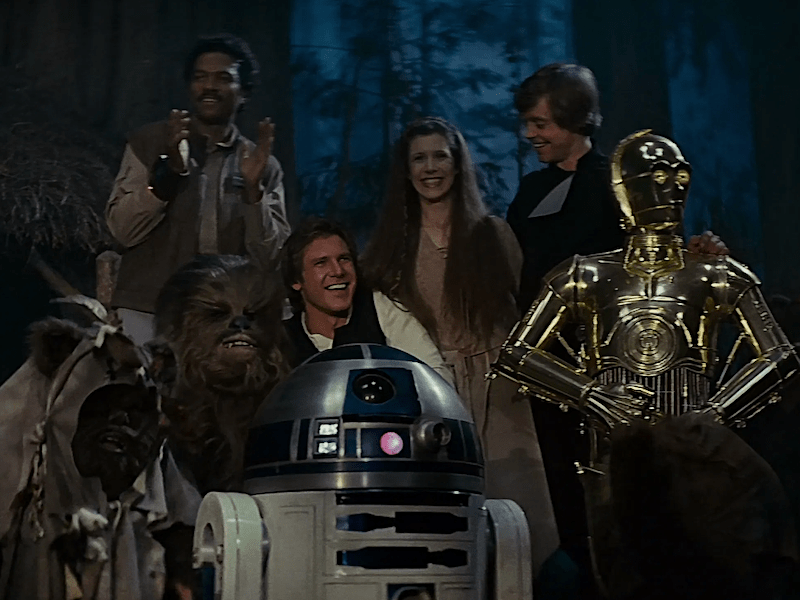#‘Wild Life’ Review: ‘Free Solo’ Directors Deliver a Stirring Depiction of Conservationism Tinged With Loss

Table of Contents
‘Wild Life’ Review: ‘Free Solo’ Directors Deliver a Stirring Depiction of Conservationism Tinged With Loss
With Sara Dosa’s Fire of Love earning a well-deserved Oscar nomination and Laura McGann’s The Deepest Breath getting a buzzy Sundance bow, the documentary subgenre of romances forged against photogenic and death-defying backdrops (sometimes featuring real-life tragedy) continues to thrive.
Elizabeth Chai Vasarhelyi and Jimmy Chin, who won an Academy Award for Free Solo, one of the best films of this type, are back on tangentially similar terrain with Wild Life, an SXSW premiere that will get a brief theatrical run before hitting NatGeo. Less an adrenaline-filled suspense piece than Free Solo, Wild Life is a sad and inspiring love story, as well as a portrait of great wealth put to humanity’s common good, even if it glosses over a number of ethical head-scratchers. It’s still beautiful to look at, but I most enjoyed Wild Life as a complicated procedural about land use (don’t expect to see that blurbed on a poster any time soon).
Wild Life
The Bottom Line
Romance and inspiration overcome concerns of eco-colonialism.
Venue: SXSW Film Festival (Documentary Spotlight)
Directors: Elizabeth Chai Vasarhelyi and Jimmy Chin
1 hour 33
Separately, Kris and Doug Tompkins were integral to the founding and cultural explosions of the North Face, Esprit and Patagonia brands. Together, after a midlife marriage, they became central to what is described as the largest land donation in human history — a process of buying up millions of acres of wilderness in Chile and, through collaborations with an initially reticent government, transforming them into vast and protected national parks.
Theirs is a remarkable, environmentally staggering achievement, colored by Doug’s death in 2015. That event moved the mantle of heroism onto Kris, fighting through grief to realize this shared dream.
Bucking a recent trend that has begun to get on my nerves, Wild Life doesn’t treat Doug’s death as a late-film twist. The documentary begins with Kris and several people in her sphere, including Chin, climbing a Chilean peak that was important to Doug as she reflects on his corporeal absence but his spiritual presence. His death is included here in an animated sequence that, punctuated by the swelling score from Gustavo Santaolalla and Juan Luqui, is moving without being excessively graphic.
Kris and Doug came together through mutual friend and collaborator (and Wild Life talking head) Yvon Chouinard, the Patagonia founder who you may recall donated the multi-billion-dollar company to fund planet-saving projects just last year. Theirs is a fascinating story of two people who reached an astonishing professional peak, made a mind-boggling amount of money and, realizing their lives didn’t have the meaning they wanted, set out to do something better.
Even more mind-boggling than the wealth Doug brought into his land-acquisition and transformation process — one subject is careful to emphasize that Doug wasn’t playing with billions, only hundreds of millions, so… I guess that’s more relatable — is the work that had to go into making these national parks.
There’s a section in the middle of the documentary that’s almost all about the negotiations with local and national politicians and the extensive pushback they received. Even if that stuff is peppered with gorgeous Patagonia photography and explanatory charts and animation, it’s quite wonderfully wonky. It’s hard to fathom how Doug and Kris conceived of this as a goal, much less how they executed it.
Honestly, I wish it had gone even further, because despite the presence of a solid assortment of high-profile Chilean politicians, topped by former President Michelle Bachelet, the documentary treats the pushback against the Tompkins plan as exclusively a product of xenophobia, anti-American sentiment and even antisemitism (despite none of the principals here being Jewish). The documentary isn’t really prepared to engage with the idea that there’s a whiff of eco-colonialism to rich Americans going to a foreign country, acquiring vast tracts of land and essentially saying, “I know what to do with your land better than you do,” even if they are probably correct. No matter how thoroughly persuasive Wild Life is in capturing Doug’s and especially Kris’ heroism, there are legitimate eyebrows that could be raised.
Wild Life also fails a little when it comes to integrating Chin’s connection to the story. It isn’t unusual for the National Geographic photographer and seasoned climber to have a presence in their documentaries — he’s right there in Free Solo — but it initially feels like Chin will be a more central on-screen presence, and yet the film doesn’t exactly convey that personal link. Or maybe the personal link just comes through in how comfortable Kris and other subjects are in talking to the filmmakers about the closeness of their relationship with Doug. Kris goes so far as to read/narrate painful chapters from her own diary, some whimsical and tinged with puppy love, others drowning in melancholy.
Despite the crushing loss at the center of this documentary, Wild Life never feels depressing because of how Kris turned her pain into motivation — something that could apply or be extended to anybody facing loss, with or without millions of dollars to parlay into wildlife replacement and national parks infrastructure. Throw in the soaring aerial photography of the Patagonian mountains, impressive archival material from Doug’s earlier adventures — see also previous documentaries 180° South and Mountain of Storms — and a reasonable call to action on global change, and you get a film less about somebody who died and more about a love and an aspiration that lives on.
If you liked the article, do not forget to share it with your friends. Follow us on Google News too, click on the star and choose us from your favorites.
For forums sites go to Forum.BuradaBiliyorum.Com
If you want to read more Like this articles, you can visit our Social Media category.




